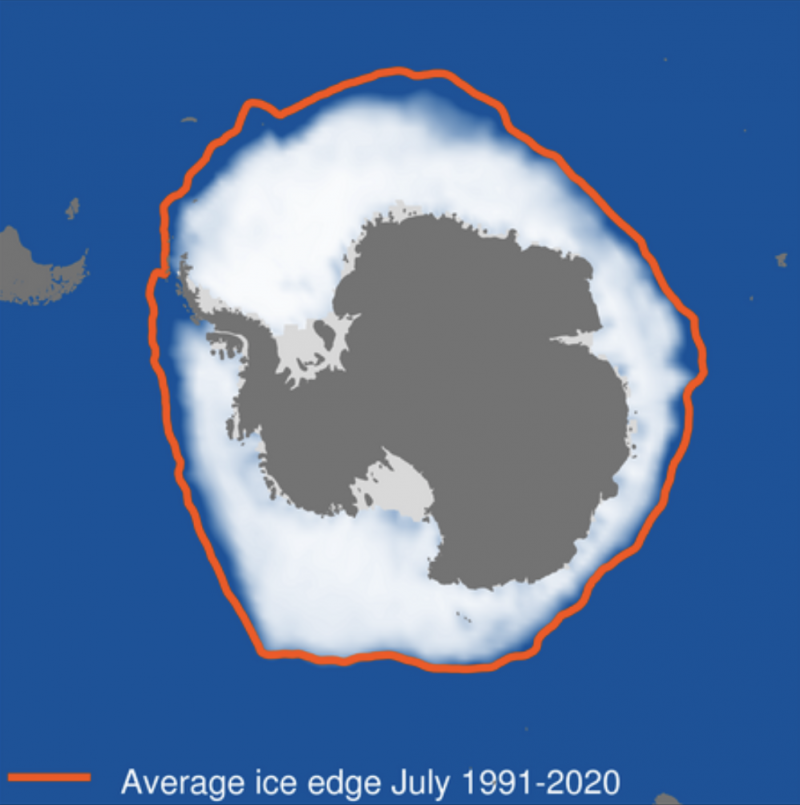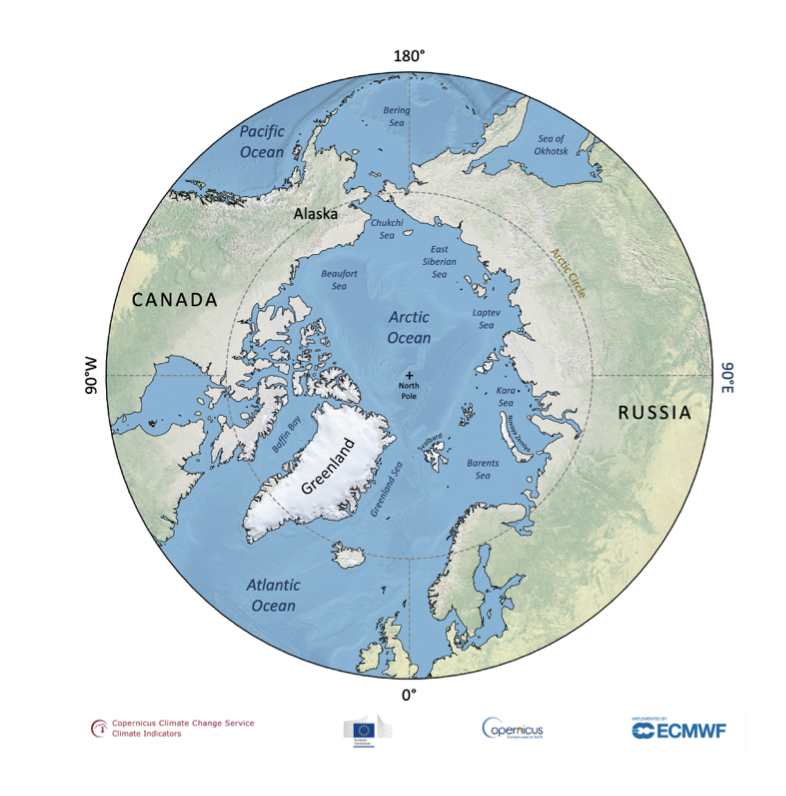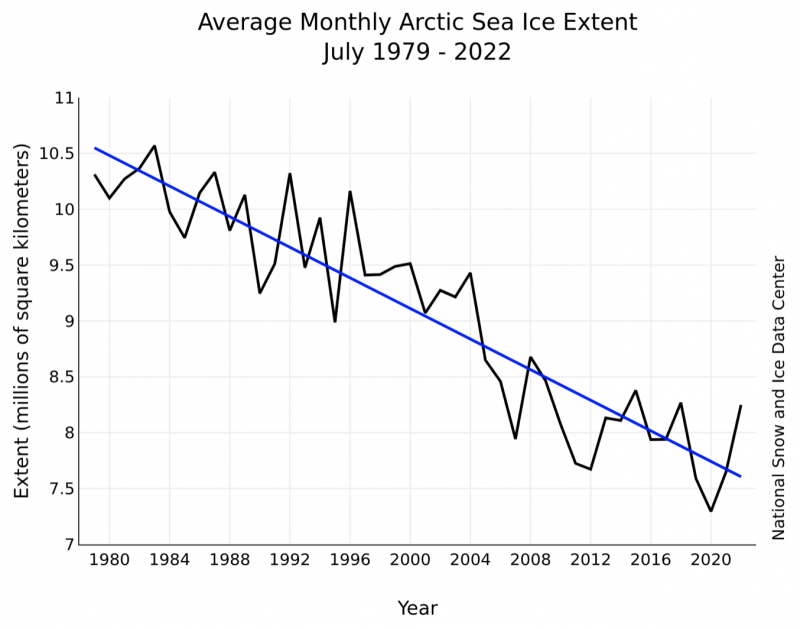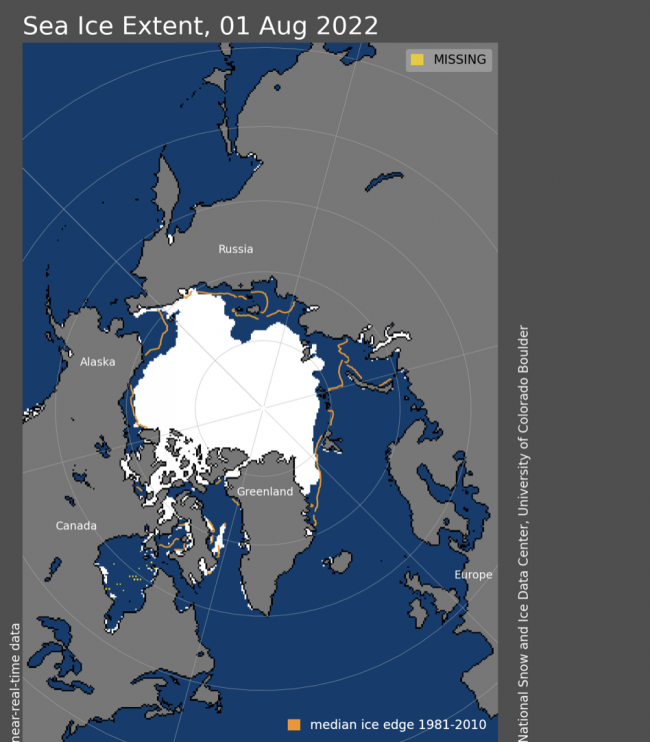
Antarctic sea ice for July 2022
The Copernicus Climate Change Service (C3S) – a satellite monitoring group for the European Union – said in a bulletin yesterday (August 8, 2022) that:
Antarctic sea ice extent reached its lowest value for July in the 44-year satellite data record, at 7 percent below average, well below the previous record.
The bulletin explained that the low ice values for July 2022 continued a string of below-average monthly extents observed since February 2022.
C3S also said that, globally, July 2022 was one of three warmest Julys on record, close to 0.4°C above the 1991-2020 reference period, with much above average temperatures over large parts of land masses in the Northern Hemisphere.


Meanwhile, in the Arctic
July 2022 was also one of the hottest Julys ever recorded in the Northern Hemisphere. And we wondered if the summer heat meant an extreme in Arctic sea ice decline this summer. The data aren’t all in yet, but, on August 2, 2022, the National Snow and Ice Data Center (NSIDC) – part of University of Colorado, Boulder, and part of NOAA – reported that Arctic sea ice cover was 4 percent lower than average in July 2022. So it’s lower than the 44-year average, but not nearly as low as some years. In fact, July 2022 has just the 12th-lowest July sea ice extent on record. In a post titled Unknowns Lie Ahead, NSIDC wrote:
Looking at the month as a whole, July [2022] sea ice extent declined by 2.42 million square kilometers (930,000 square miles), or at a rate of 78,100 square kilometers (30,200 square miles) per day, which was near the 1981 to 2010 average. This resulted in the average July extent ranking 12th-lowest in the satellite record. The downward linear trend in July sea ice extent over the 44-year-satellite record is 68,500 square kilometers (26,400 square miles) per year, or 7.2 percent per decade relative to the 1981 to 2010 average.
Which all goes to show that – as always – climate is complicated.
The charts below tell more of the story.



Bottom line: For us in the Northern Hemisphere, it’s been a hot summer. And Arctic sea ice has declined below the 44-year average, but ranks only 12th-lowest in the satellite record. On the other end of the globe – where it’s winter now – Antarctic sea ice extent reached its lowest value for July in the 44-year satellite data record, at 7 percent below average.
Via Copernicus Climate Change Service
Read more: Openings in Antarctic sea ice influence global climate
Read more: NASA Studies Find Previously Unknown Loss of Antarctic Ice
The post Antarctic sea ice for July 2022 lowest on record first appeared on EarthSky.
0 Commentaires